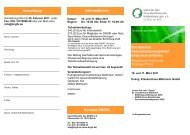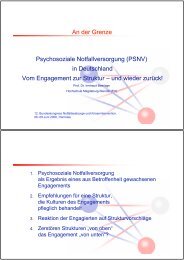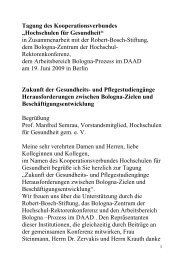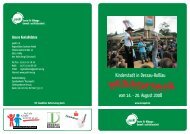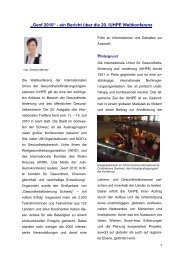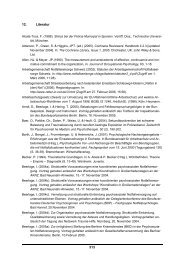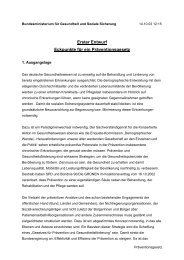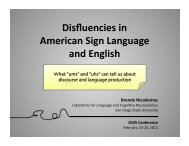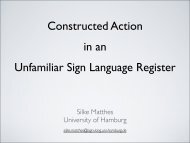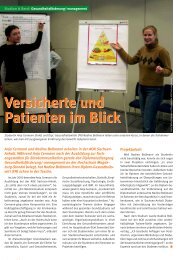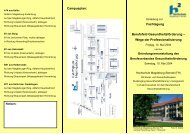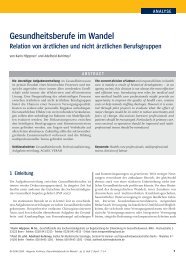Discourse markers
Discourse markers
Discourse markers
Create successful ePaper yourself
Turn your PDF publications into a flip-book with our unique Google optimized e-Paper software.
<strong>Discourse</strong> <strong>markers</strong><br />
Schiffrin (1987/2001)<br />
•<br />
Sequentially dependent elements that bracket units of talk<br />
•<br />
Multifunctional, operate at both local and global levels, operate<br />
on different planes (ie a participation framework, information<br />
state, ideational structure, action structure, exchange structure)<br />
•<br />
Schiffrin suggests that they have clause initial position – we<br />
would like to propose that some discourse <strong>markers</strong> can be<br />
found in other positions<br />
11.03.11 DGfS2011 Göttingen
Outline of our talk:<br />
•<br />
Show and briefly discuss examples of the lexicalized sign DONE<br />
(FERDIG) in different contexts with somewhat varied discourse<br />
functions<br />
•<br />
Show and discuss observations of PALM-UP signed by different<br />
signers in similar contexts<br />
•<br />
Suggest – and hopefully discuss with you – possible interpretations of<br />
our findings<br />
11.03.11 DGfS2011 Göttingen
Data – three different types of monologues<br />
•<br />
A published non-fiction expository text about F14 Tomcat fighter<br />
planes (as part of the web-based teaching materials in the<br />
Norwegian Sign Language curriculum in upper secondary<br />
school)<br />
•<br />
Elicited narratives<br />
–<br />
The Frog Story<br />
–<br />
September 11th 2001 narratives (personal impressions and<br />
reminiscences of the media coverage)<br />
•<br />
Levels of text:<br />
–<br />
Clause<br />
–<br />
Sequence<br />
–<br />
Text<br />
11.03.11 DGfS2011 Göttingen
DONE Frog story (02:02.29)<br />
•<br />
Text final position<br />
•<br />
Mouthing – resembles<br />
the Norwegian word<br />
“ferdig” (in English “done”)<br />
11.03.11 DGfS2011 Göttingen
ONLY-THAT F14 (01:01.12)<br />
•<br />
Sentence-final, sequence- and sub-topic final<br />
position<br />
•<br />
Delimiting function<br />
11.03.11 DGfS2011 Göttingen
PALM-UP Frog story 2 (04:17.05 – 04:17.72)<br />
•<br />
Text final position<br />
•<br />
Oral component: ‘ferdig’<br />
•<br />
Meaning: “and that was all I had to say”<br />
11.03.11 DGfS2011 Göttingen
PALM-UP F14 (00:43.34)<br />
•<br />
Intra-textual position<br />
•<br />
Signals exemplification<br />
or elaboration of a topic<br />
or theme<br />
11.03.11 DGfS2011 Göttingen
PALM-UP F14 (00:55.85)<br />
•<br />
Intra-textual position<br />
•<br />
Indicates<br />
exemplification<br />
11.03.11 DGfS2011 Göttingen
PALM-UP Sept. 11 narrative 1 (00:45.8 ─00:46.65)<br />
Intra-textual position<br />
Role shift<br />
Oral component closed with the corner of the mouth drawn<br />
down<br />
11.03.11 DGfS2011 Göttingen
Gesture and sign<br />
•<br />
Kendon (2004) and McNeill (1992, 2005)<br />
palm-up among hearing speakers:<br />
- The ultimate nothing<br />
- Pointing<br />
•<br />
“Idea unit” (Kendon) or “Growth Point” (McNeill)<br />
Gesture<br />
Language<br />
11.03.11 DGfS2011 Göttingen
Sign and gesture<br />
Erlenkamp (2009: § 71)<br />
“The difference between gestures and depicting verbs and other<br />
signs is – besides the degree of grammaticalization – mainly<br />
based on the complexity in the use of the different mapping<br />
types.” (Echoes of Liddell 2003, Fauconnier & Turner 2002)<br />
11.03.11 DGfS2011 Göttingen
<strong>Discourse</strong> <strong>markers</strong> – sign or gesture<br />
Back to our examples of discourse <strong>markers</strong> in the twilight zone:<br />
•<br />
They resemble gestures in that their meaning is by and large<br />
determined by the context in which they appear<br />
•<br />
They resemble signs in that they have some grammaticalized<br />
properties<br />
–<br />
modified for direction and intensity<br />
11.03.11 DGfS2011 Göttingen
Working hypothesis 1:<br />
PALM-UP in text-final position with mouthing and eye contact:<br />
- highly lexicalized<br />
-<br />
semantically related to DONE (through the oral component and<br />
text position)<br />
-<br />
a different sign than DONE (different manual form and different<br />
connotations)<br />
-<br />
conceptually different origins reflected in the transparency of the<br />
iconic properties of these signs:<br />
- cutting off or limiting (DONE) compared to<br />
- spreading out (PALM-UP)<br />
11.03.11 DGfS2011 Göttingen
Working hypothesis 2<br />
PALM-UP in an intra-textual position:<br />
- more gesture-like, less lexicalized<br />
- global, synthetic reading of meaning<br />
- dependent on context<br />
- some linguistic properties<br />
- direction, some aspectual modification<br />
- text-structuring functions as a discourse marker<br />
- connective function<br />
- indexical function<br />
11.03.11 DGfS2011 Göttingen
Working hypothesis 3<br />
PALM-UP within a role shift:<br />
- a quoted gesture like any other gesture<br />
- reflects emotions<br />
- reflects reactions<br />
- reflects attitudes<br />
- an organic part of sign language communication<br />
But is this a discourse marker? The role shift and quoted gesture<br />
together may be used as a discourse marker in the text, but the<br />
quoted gesture is not a discourse marker by itself.<br />
11.03.11 DGfS2011 Göttingen
Conclusion<br />
We find it useful to distinguish between the terms signs and<br />
gestures when developing categories of different types of<br />
communication signals in a sign language discourse.<br />
Gesture verbs and/or gestures can function as discourse <strong>markers</strong>.<br />
This challenges both the categorization of discourse <strong>markers</strong> in<br />
general, and the need in signed language linguistics for<br />
developing categories and sub-categories of discourse <strong>markers</strong><br />
depending on both form, place in text and function.<br />
11.03.11 DGfS2011 Göttingen
References<br />
Erlenkamp, S. (2009): ”Gesture verbs”, CogniTextes, Vol 3<br />
http://cignitextes.revues.org/index250.html<br />
Fauconnier, G. & M. Turner (2002): The Way We Think, Basic Books.<br />
Kendon, A. (2004): Gesture, Cambridge University Press.<br />
Liddell, S. (2003): Grammar, Gesture and Meaning in American Sign Language,<br />
Cambridge University Press<br />
McCleary, L. & E. Viotti (2010): ”Sign-Gesture Symbiosis in Brazilian Sign<br />
Language Narrative”, in Parrill, Tobin & Turner (eds.): Meaning, Form, and Body.<br />
CSLI Publications.<br />
McNeill, D. (1992): Hand and Mind, University Press of Chicago<br />
McNeill, D. (2005): Gesture and Thought, University Press of Chicago<br />
Schiffrin, D. (1987): <strong>Discourse</strong> <strong>markers</strong>. Studies in Interactional Sociolinguistics<br />
5.<br />
Schiffrin, D.(2001): ”<strong>Discourse</strong> Markers”, in Schiffrin, Tannen & Hamilton (eds.):<br />
The Handbook of <strong>Discourse</strong> Analysis, Blackwell Publishing.<br />
11.03.11 DGfS2011 Göttingen




